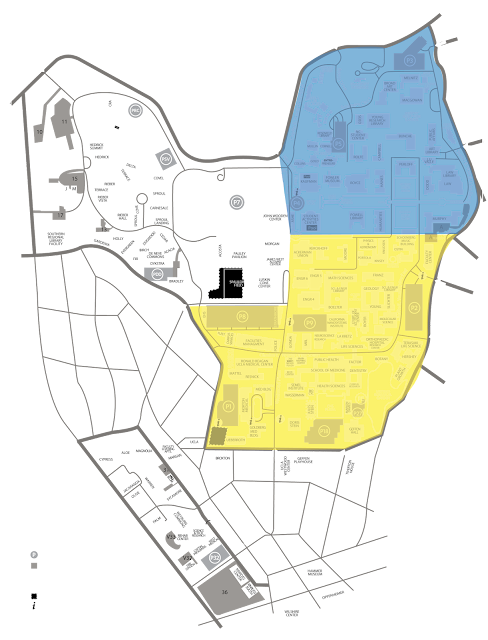Week 1 | Two Cultures
In both article Third Culture: Being in Between and The Two Cultures and the Scientific Revolution, the authors identify two different cultures, science, and humanities, and point out the lack of connection between two. Snow point suggested a Third Culture that would merge the gap between two and allow both fields talk to each other. Vesna claims that the art could be the channel to connect these two fields.
 | |
|
 |
| The Literal Bridge Between Humanities and Science. The bridge between Knudsen Hall and Humanities Building. |
At UCLA campus, it is particularly true that the two cultures, humanities, and science, are separated, geographically. While all those humanities buildings are on the north side (the North Campus, marked in blue), the science and engineering buildings are on the south side (the South Campus, marked in gold) and they are divided by the Bruinwalk. What is interesting is that Knudsen Hall (Department of Astronomy and Physic) is connected with the Humanities Building. This somewhat shows that indication, either intentionally or unintentionally, that even those two cultures need to me merged at one point.
The idea of art can be the channel that connects two separate cultures is actually reflected in most of the place while people are not aware of it. The cover photo from the journal, Nature (April 2014), shows an art piece of the brain which reflects the conductivity between different parts of the mouse brain and as a major step to understanding how human brains are wired. The colored art figure gives a chance to allow those people in humanities to visualize and understand what has happened without digging into messy data and jargon.
 |
| A Light with Printed Circuit Board. An example of a combination of art and engineering. |
For me, as an engineering major student, the takeaway can be using a presentation in art instead of just scientific figures and data to demonstrate my works as well as the projects, which could result in a better understanding across both cultures.
V. Vesna, "Toward a Third Culture: Being in between", Leonardo, Vol. 34, No. 2. (2001), pp. 121-125.
C.P. Snow, "The Two Cultures and the Scientific Revolution".
UCLA Maps, http://maps.ucla.edu/downloads/
Circuit Board, https://www.pinterest.com/tattoosskinit/circuit-board/
Nature, April 2014, Cover
Google Maps, http://maps.google.com



I like your perspective on the visual representations of scientific work which at the same time embodies artistic value. C. P. Snow also addressed that artists are more connected to the outer world while scientists are somehow shielded from the public due to a more introvert way they speak to their works. To make the two cultures harmoniously merged and interacted, changing the way of representation could be very significant. No matter for art or science, the ultimate goal of the generated works should be enjoyable and touching for the audience rather than intimidating.
ReplyDelete